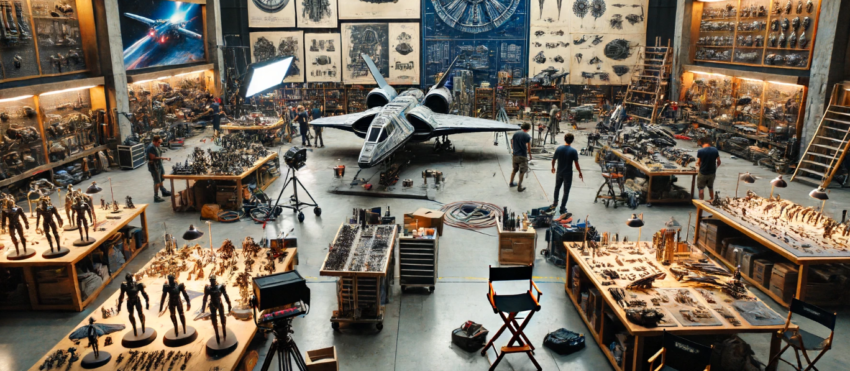| Listen to our audio presentation: 10 Best Science Fiction Films |
Since the release of “Metropolis” in 1927, the development of science fiction films has been profoundly influenced by a series of technical advancements. These innovations have significantly enhanced the visual storytelling capabilities and immersive experiences of the genre. Here are some of the most pivotal technical changes:
1. Special Effects and Visual Effects
Practical Effects:
Miniatures and Models: Early sci-fi films often used miniatures and models to create futuristic cities and spacecraft. “Metropolis” utilized groundbreaking miniature effects for its cityscapes.
Animatronics and Puppetry: The use of animatronics and puppetry, such as those seen in the “Star Wars” franchise, brought more life-like creatures and robots to the screen.
CGI (Computer-Generated Imagery):
Digital Revolution: The advent of CGI in the late 20th century revolutionized special effects. Films like “Jurassic Park” (1993) and “The Matrix” (1999) demonstrated the potential of CGI to create realistic and fantastical elements that were previously impossible.
Motion Capture: Technologies like motion capture, used in “Avatar” (2009), allow for realistic animation of characters and creatures, blending live-action performances with digital artistry.
2. Sound and Music
Synchronized Sound:
Introduction of Sound: The transition from silent films to “talkies” in the late 1920s and early 1930s added a new dimension to storytelling, allowing for synchronized dialogue, sound effects, and music scores that enriched the narrative experience.
Sound Design:
Advanced Sound Effects: Modern sound design techniques have significantly enhanced the immersive quality of sci-fi films. Iconic sound effects, such as the lightsaber hum in “Star Wars” and the eerie tones of “Inception,” are crucial to the genre’s impact.
Dolby Atmos and Surround Sound: Advanced audio systems like Dolby Atmos create a three-dimensional sound environment, making viewers feel enveloped by the film’s world.
3. Cinematography
Color Film:
Technicolor: The introduction of Technicolor in the 1930s allowed for vibrant color palettes, which became crucial for the visual impact of sci-fi films. Early color sci-fi films, like “The Wizard of Oz” (1939), paved the way for future works.
Digital Cinematography:
High-Definition and 4K: The shift from film to digital cinematography has enabled higher resolution images, allowing for more detailed and visually stunning sci-fi environments.
IMAX and 3D Technology: The use of IMAX and 3D technologies, as seen in films like “Avatar,” provides an immersive viewing experience with unparalleled depth and detail.
4. Editing and Post-Production
Non-linear Editing Systems:
Digital Editing: The transition from manual film splicing to digital non-linear editing systems (such as Avid and Final Cut Pro) has streamlined the editing process, allowing for greater creativity and precision in storytelling.
Advanced Compositing:
Green Screen and Compositing: The use of green screen technology and advanced compositing techniques enables filmmakers to seamlessly blend live-action footage with computer-generated backgrounds and effects.
5. Visual Design and Concept Art
Concept Art:
Detailed Pre-visualization: The role of concept artists and pre-visualization techniques has become integral to the planning and execution of sci-fi films, ensuring a cohesive and visually compelling aesthetic.
Production Design:
Innovative Set Design: Advanced materials and construction techniques have allowed for more elaborate and believable set designs, contributing to the immersive worlds seen in films like “Blade Runner 2049” (2017).
6. Interactive and Emerging Technologies.
Virtual Reality (VR) and Augmented Reality (AR):
Immersive Experiences: VR and AR technologies are beginning to influence the way sci-fi stories are told, offering new ways for audiences to engage with narratives in interactive and immersive formats.
AI and Machine Learning:
Intelligent Filmmaking: AI and machine learning are starting to play a role in various aspects of filmmaking, from scriptwriting assistance to the enhancement of special effects and post-production processes.
Conclusion
The evolution of technical innovations since “Metropolis” has transformed science fiction filmmaking, allowing for more sophisticated, immersive, and visually stunning narratives. These advancements have not only expanded the boundaries of what is possible on screen but also enriched the storytelling potential of the genre, making it one of the most dynamic and continually evolving forms of cinematic art.

